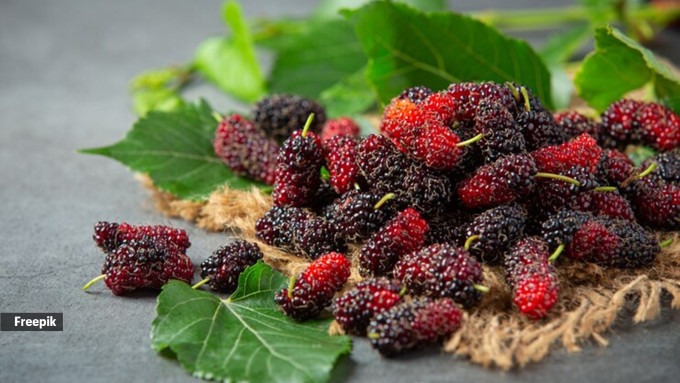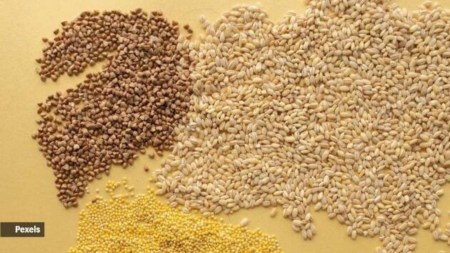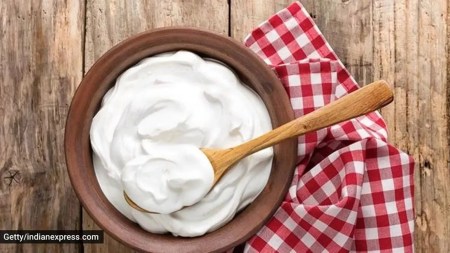Do some foods turn ‘toxic’ when you refrigerate them? Experts weigh in
Refrigerator has come to assume the role of a safe space for many of the kitchen ingredients. While you love to tuck away most of your groceries, there are some perishable foods that you must not store in the refrigerator as they tend to develop moulds.
According to ayurveda and gut health coach Dr Dimple Jangda, some foods turn “toxic” when you refrigerate them.

Garlic
Never buy peeled garlic and refrigerate it because it starts catching mould very quickly. “And garlic mould has been linked with cancer,” said Dr Jangda. However, Dr Dilip Gude, senior consultant physician, Yashoda Hospitals, Hyderabad noted that “there is no link with cancer development upon consumption of refrigerated garlic”.
Always buy fresh garlic with a peel. Unpeel it only when you’re about to cook it and keep it outside the refrigerator, always, said Dr Jangda.
Onions
Onion is a crop that is resistant to low temperatures. “When you refrigerate it, the starch starts converting into sugar and starts catching mould,” described Dr Jangda.
Lots of people make the mistake of cutting half an onion, cooking it and keeping the other half in the fridge. “Never do that. It starts collecting all the unhealthy bacteria in the environment and catches mould,” said Dr Jangda.
Ginger
According to Dr Jangda, it starts catching mould very quickly when you refrigerate it, and that has been linked with kidney and liver failures. Do not refrigerate it.
Rice
Lots of people have started keeping cooked rice in the refrigerator because of the resistance to starch, and they think it is helping the cholesterol and blood sugar levels. “But in fact, rice is one of the ingredients that catch mould the fastest. If you’re going to refrigerate it, not more than 24 hours,” said Dr Jangda. Concurred Dr Gude and said that cooked rice should not be kept in the fridge for longer than 24 hours as it may facilitate bacterial and fungal growth. “Eating reheated rice can cause food poisoning with Bacillus cereus etc,” said Dr Gude.
 Don’t store rice in the refrigerator for more than 24 hours (Source: Getty Images/Thinkstock)
Don’t store rice in the refrigerator for more than 24 hours (Source: Getty Images/Thinkstock)
Some other foods that stay fresh when outside
Dr Gude shared:
*Bell peppers, and avocados should be stored in airtight containers at room temperature.
*Similarly, cucumbers can become watery and develop pits if refrigerated.
*Potatoes can become sweetened and gritty if refrigerated. “Storing at room temperature in airtight containers can help,” said Dr Gude.
*Apples can be stored on the counter at room temperature for about a week after which they can be stored in the refrigerator if there is a need to store them longer.
*Bananas if the stalk is sealed with an airtight plastic wrap, can prolong their durability and prevent them from ripening too fast.
*Berries also should not be refrigerated and if they are dry they tend to stay long.
 Mulberries are packed with nutrients. (Source: Freepik)
Mulberries are packed with nutrients. (Source: Freepik)
*Whole melons are to be stored outside the fridge and in cade cut, they can be stored in the fridge.
*Honey can become hard and lumpy in the fridge, and likewise chocolate tends to get grainy and flavourless in the fridge.
How to reduce the possibility of bacterial contamination in fruits and vegetables that have been stored
Dr Gude shared the following measures
Wash Well Before Storing
Give fruits and vegetables a thorough wash before putting them in the fridge. Rinse them with cool, clean water; for objects with thicker skins, use a brush. This aids in the removal of bacteria, insecticides, and filth.
Appropriate Storage
Keep fruits and vegetables in the refrigerator’s designated sections. To avoid cross-contamination, keep them apart from raw meat, poultry, and seafood.
Temperature Control
Verify that the right temperature is selected in your refrigerator. The recommended temperature range for storing most fruits and vegetables is 32°F to 40°F (0°C to 4°C).
Control of Moisture
A few fruits and vegetables have moisture sensitivity. To absorb extra moisture, use paper towels or breathable bags, especially for products kept in the crisper drawers.
Frequent Cleaning
To avoid the growth of bacteria and mould, clean the refrigerator frequently. Observe the shelves and drawers that hold the fruits and vegetables.
Appropriate Packaging
To reduce the risk of bacterial contamination and to keep cut fruits and vegetables from drying out, store them in airtight containers.
View this post on Instagram
A post shared by DrDimple, Ayurveda & Gut Health Coach (@drdimplejangda)
Disclaimer: The copyright of this article belongs to the original author. Reposting this article is solely for the purpose of information dissemination and does not constitute any investment advice. If there is any infringement, please contact us immediately. We will make corrections or deletions as necessary. Thank you.





